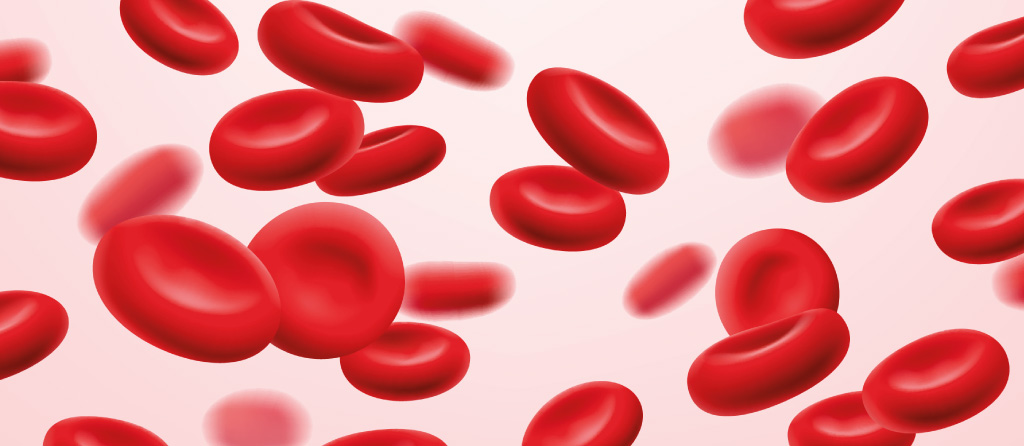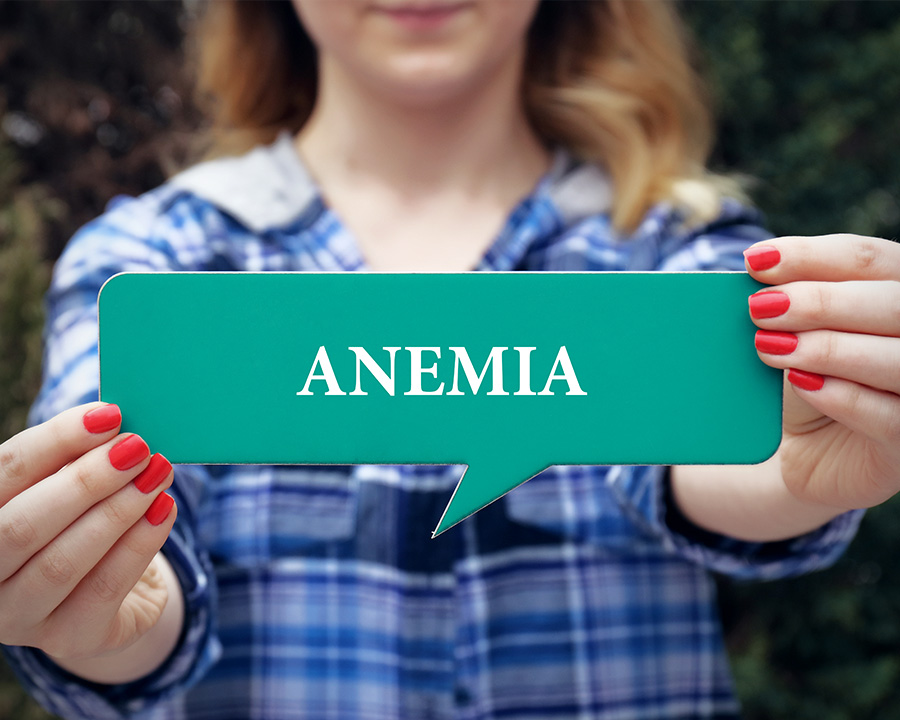The Importance of Hemoglobin in Women’s Health
Of all the blood tests available for female patients, one of the most important is hemoglobin. In addition to helping detect several other health conditions, this simple test can identify anemia, which is common among — and potentially problematic for — women throughout their lives.


The Importance of Hemoglobin in Women’s Health
April 22, 2021
.
Of all the blood tests available for female patients, one of the most important is hemoglobin. In addition to helping detect several other health conditions, this simple test can identify anemia, which is common among — and potentially problematic for — women throughout their lives. In fact, the authors of a 2018 study published in Expert Review of Hematology state that an iron-deficient state can have profound effects on a woman’s physical and emotional health and well-being.1
Yet, the study authors add, despite anemia being so prevalent among women, the condition is underdiagnosed and undertreated, which can lead to serious complications.
Let’s take a look at some of the most common questions about hemoglobin, including the role it plays in women’s health, what abnormal levels can indicate and why it’s important to stay on top of your patients’ numbers.

.
Q: What is hemoglobin?
A: Hemoglobin is an iron-rich protein contained in red blood cells. In addition to giving blood its red color, hemoglobin makes it possible for red blood cells to transport oxygen from the lungs throughout the body. It also allows carbon dioxide to be transported from the body to the lungs, where it’s exhaled.2
To manufacture hemoglobin and its carriers, red blood cells, the body needs adequate amounts of iron, as well as folate, vitamin B-12 and other nutrients, the Mayo Clinic reports.2
Q: How is hemoglobin measured?
A: While a standard CBC is often used to measure hemoglobin levels, other tests are available that give accurate, specific readings on the spot — no venipuncture needed, and no waiting for lab results. The HemoCue® Hb 801 System, for example, includes point-of-care tests that gather blood samples via a fingerstick and microcuvette. The microcuvette is then inserted into the analyzer, which displays results in less than one second.
While ranges for normal hemoglobin levels can vary a bit according to specific labs or medical practices, the Mayo Clinic cites the following as general guidelines:3
• For nonpregnant women: 12.0 – 15.5 g/dL
• For men: 13.5 – 17.5 g/dL
Q: Why is it important to test hemoglobin?
A: According to the U.S. National Library of Medicine at the National Institutes of Health, abnormal hemoglobin levels do not always indicate a medical problem, as high or low numbers can be caused by fairly innocuous factors, such as a patient’s activity level, diet, medications or menstrual cycle. Even living at a high altitude can cause abnormal levels.
However, high or low levels can also indicate more serious medical conditions, including liver or heart disease, cancer or, as mentioned above, anemia.4

.
Q: Is anemia more common among women?
A: According to the Office on Women’s Health at the U.S. Department of Health & Human Services, anemia does affect more women than men. The risk of anemia is highest for women who are pregnant or who have heavy menstrual periods: The condition occurs in one of every six pregnant women, while up to 5 percent of women of childbearing age become anemic because of heavy menstrual bleeding.5 Having uterine fibroids can also cause anemia due to the heavy menstrual bleeding associated with the condition, the Cleveland Clinic reports.6
Because anemia is common during pregnancy, the American College of Obstetricians and Gynecologists states that women typically receive a CBC, which contains a hemoglobin test, as part of their routine obstetric care.7

.
Q: What types of medical conditions are associated with anemia?
A: According to the Mayo Clinic, untreated anemia can lead to several conditions, some potentially dangerous. Those include severe fatigue, arrhythmias, an enlarged heart and heart failure.2
Pregnant women with untreated anemia have an increased risk for preterm delivery and delivering a low-birthweight baby, the Centers for Disease Control and Prevention reports.8 Postpartum hemorrhage (PPH) is the major cause of maternal mortality and morbidity worldwide, and the risk of PPH is increased by anemia.9
.
Q: What can low hemoglobin levels indicate?
A: While some people can have a slightly low hemoglobin count without illness (menstruating or pregnant women, for example), lower levels of hemoglobin can be associated with certain medications, such as chemotherapy drugs and those used to treat HIV, the Mayo Clinic reports. Some medical conditions can also cause a low hemoglobin count, including the following:10
.
• Blood loss
• Cancer
• Cirrhosis
• Hypothyroidism
• Inflammatory bowel disease
.
• Kidney disease
• Lead poisoning
• Rheumatoid arthritis
• Sickle cell anemia
• Thalassemia
.
Q: What can high hemoglobin levels indicate?
A: According to the Mayo Clinic, high hemoglobin counts most often reflect the body’s need for an increased oxygen-carrying capacity, such as due to smoking or living at a high altitude. Other conditions that can cause elevated hemoglobin levels include the following:11
.
• Congenital heart disease
• COPD exacerbation
• Dehydration
• Emphysema
.
• Heart failure
• Kidney or liver cancer
• Polycythemia vera
.
We hope this primer has helped to reinforce the importance of hemoglobin and the role it plays in your patients’ health and well-being. It may be a tiny protein, but it’s got giant effects, and deserves to be at the top of your healthcare checklist.
Footnotes:
1 Mirza, Fadi G., et al. “Impact and Management of Iron Deficiency and Iron Deficiency Anemia in Women’s Health.” Expert Review of Hematology, vol. 11, no. 9, Sept. 2018, pp. 727–36. Taylor and Francis+NEJM, doi:10.1080/17474086.2018.1502081.
2 “Anemia - Symptoms and Causes.” Mayo Clinic, https://www.mayoclinic.org/diseases-conditions/anemia/symptoms-causes/syc-20351360. Accessed Mar. 2021.
3 Hemoglobin Test. Mayo Clinic, https://www.mayoclinic.org/tests-procedures/hemoglobin-test/about/pac-20385075. Accessed Mar. 2021.
4 Hemoglobin Test. MedlinePlus, https://medlineplus.gov/lab-tests/hemoglobin-test/. Accessed Mar. 2021.
5 “Iron-Deficiency Anemia.” Womenshealth.Gov, 17 Feb. 2017, https://www.womenshealth.gov/a-z-topics/iron-deficiency-anemia.
6 “Anemia: Symptoms, Types, Causes, Risks, Treatment & Management.” Cleveland Clinic, https://my.clevelandclinic.org/health/diseases/3929-anemia. Accessed Mar. 2021.
7 Routine Tests During Pregnancy, https://www.acog.org/en/womens-health/faqs/routine-tests-during-pregnancy. Accessed Mar. 2021.
8 Recommendations to Prevent and Control Iron Deficiency in the United States, https://www.cdc.gov/mmwr/preview/mmwrhtml/00051880.htm. Accessed Mar. 2021.
9 William D. Fraser, Michael S. Kramer, “Labor and Delivery.” Women and Health, 2000
10 “Low Hemoglobin Count Causes.” Mayo Clinic, https://www.mayoclinic.org/symptoms/low-hemoglobin/basics/definition/sym-20050760. Accessed Mar. 2021.
11 “High Hemoglobin Count Causes.” Mayo Clinic, https://www.mayoclinic.org/symptoms/high-hemoglobin-count/basics/definition/sym-20050862. Accessed Mar. 2021.
Related Articles
Introducing the HemoCue Customer Portal
